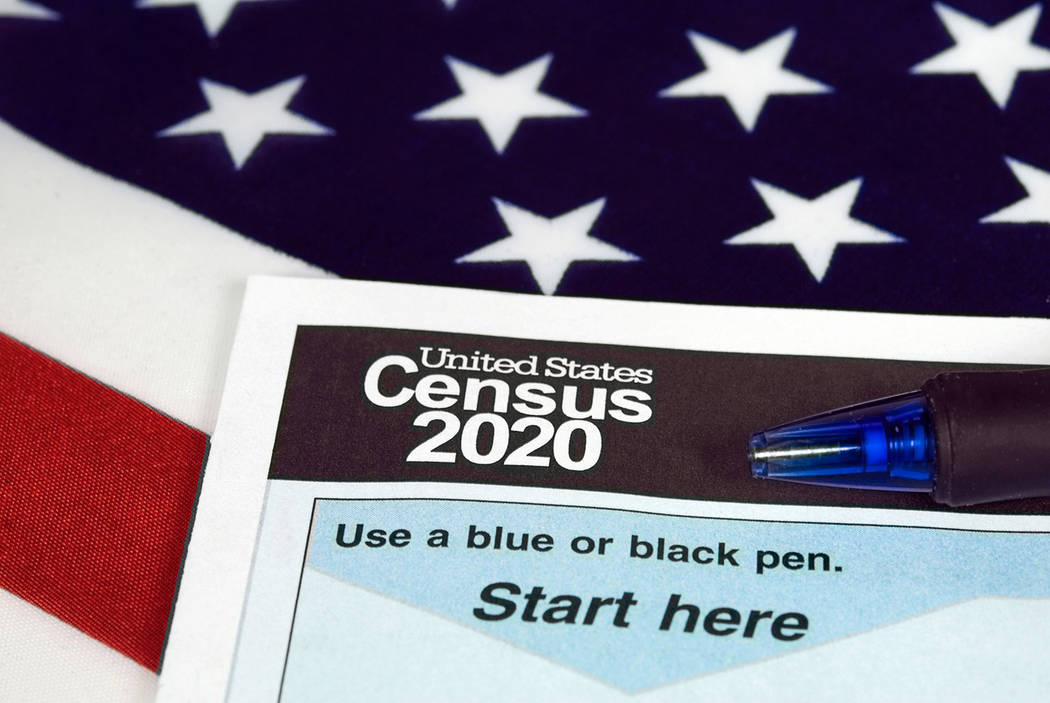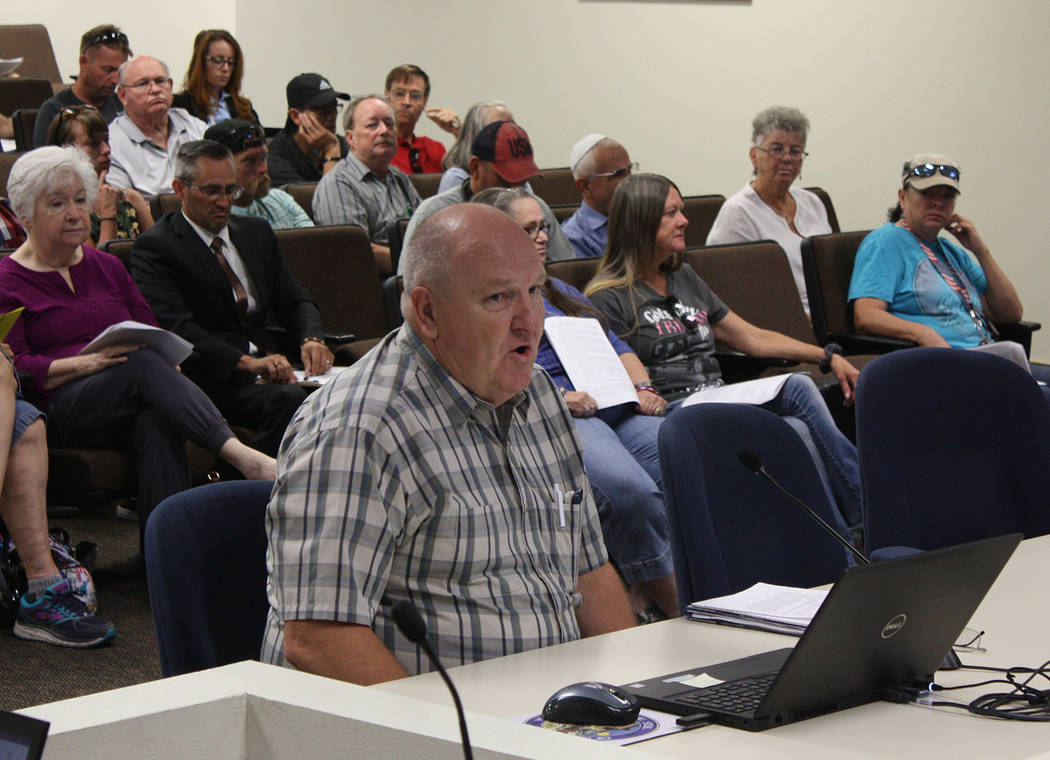2020 Census presentation to Nye County details key information
The 2020 census may still be seven months off but officials with the U.S. Census Bureau are already hard at work readying for the once-a-decade population count, with public education about the process a key part of that preparation.
With this in mind, U.S. Census Bureau Partnership Specialist Glen Marsh made a visit to the valley to provide the Nye County Commission with an informational presentation detailing the purpose and importance behind the census count.
“The mission of the 2020 census is to count everyone once, only once, and in the right place. The census is mandated by the U.S Constitution and it’s used for some very important things,” Marsh explained.
“Why does the 2020 census matter? Well, it has to do with power and money,” Marsh stated. He detailed that the census directly affects political representation, by apportioning populations into various political districts, such as those for the U.S. House of Representatives.
On the financial front, Marsh said there is $675 billion dollars in federal funding distributed annually, based on population data gathered by the census.
“In Nevada, there is over $6 billion each year provided to the state based on census information and that works out to about $2,000 per year per person that is counted. So if we miss someone, you can see the significance of that. $2,000 per year, the census is only done every 10 years so that’s about $20,000 per person that might be missed,” Marsh informed the commission.
His presentation included a table describing exactly how the $6 billion in federal funding in 2016 had been utilized, with a slew of programs listed, such as Medicaid, the Women, Infants and Children program, special education grants, rural rental assistance and much more.
Turning to response rates in the state, Marsh highlighted the low response scores throughout Nye County, which ranged from approximately 17 percent near Pahrump to over 27 percent in the far northern portion of the county. This is the percentage of residents who are expected to not respond to the census, which means census workers will likely have to go door to door in those areas to ensure all of the county’s population is tabulated.
One of the major points of emphasis for Marsh during his presentation was the confidentiality of the information gathered by the census. He stressed that no government agency will have access to the data of individual persons.
“I want to assure everyone that the census is confidential. It is protected by Title 13 and Titles 26 of the U.S. Code,” Marsh said. “Every employee takes an oath of confidentiality. The punishments are severe for disclosing information. No information is ever released to any government agency or entity, including the FBI, IRS, ICE, Welfare agency, homeowners associations, anyone, not even the county board.”
Marsh’s presentation broke down the timeline for the 2020 census process as well, providing a list of key dates and their related activities. The first major milestone on the timeline was the formation of the Nevada State Complete Count Committee, which Nevada Gov. Steve Sisolak established in April with Lt. Gov. Kate Marshall appointed as chairwoman.
The process is currently in the “address canvassing” stage, which runs from August to October. During this time period, the bureau is working to update its address frame and identify locations where people live or could live.
Update leave, service-based enumeration and group quarter enumeration will also be started in March 2020, Marsh stated. During the update leave process, a census employee will stop by addresses and leave packets to encourage the residents to self-respond to the census.
Service-based enumeration is the process by which the Census Bureau identifies individuals receiving assistance at service-based location and those experiencing homelessness or who are living in transitory locations, such as campgrounds, tent cities or hotels. Similarly, the group quarter enumeration process delineates locations where residents are living in group settings, such as correctional facilities, assisted living locations and college campuses, so they too can be counted in the census.
On March 12, 2020, residents will be able to begin responding to the census questionnaire by either a paper form, over the phone on online. The self-response portion of the census will culminate in Census Day, set for April 1, 2020.
Between those dates, up to five mail-outs will be sent out to remind residents to participate. Following Census Day, early non-response follow up will be conducted in April in areas such as colleges and universities, after which regular non-response follow-up for all others will be performed from May to July.
“The best way to avoid someone knocking on your door is to respond to the census when you get the notice,” Marsh said.
The final count will be delivered to President Donald Trump on Dec. 31, 2020. The information will then be given to the states in 2021 so they can use the data to complete the redistricting of electoral district boundaries.
For more information on the 2020 census visit www.census.gov
Contact reporter Robin Hebrock at rhebrock@pvtimes.com
At a glance
The census determines how many representatives each state gets in Congress and is used to redraw district boundaries.
Communities rely on census statistics to plan for a variety of resident needs including new roads, schools and emergency services.
Businesses use census data to determine where to open places to shop.
Each year, the federal government distributes more than $675 billion to states and communities based on Census Bureau data.
Source: U.S. Census Bureau


















